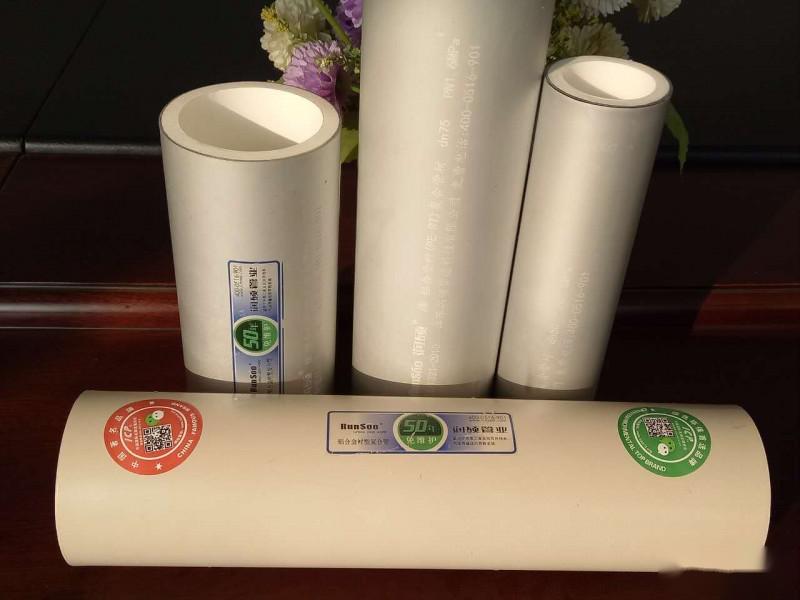Advantages and Disadvantages of Composite Pipes Used in Engineering | Aluminum Alloy Lined Plastic Pipes Have Advantages
Composite Material Pipes
With the continuous development of industry and technological improvements in our country, a large number of new materials and new processes have been adopted in drainage engineering, and composite material pipes have been widely used in building water supply projects.
(1) Aluminum Plastic Composite Pipe
The middle layer of aluminum plastic composite pipes is made of welded aluminum pipes, while the outer and inner layers are made of medium-density or high-density polyethylene or cross-linked high-density polyethylene, bonded together with hot melt adhesive. This pipe not only possesses the pressure resistance of metal pipes but also has the corrosion resistance of plastic pipes, making it an ideal material for building water supply. Aluminum plastic composite pipes generally use threaded joint fittings. Their fittings are usually made of copper, where the fitting nut is first placed on the pipe end, then the fitting core is inserted into the end, and finally, a wrench is used to tighten the fitting and nut. It has good temperature resistance, is convenient for construction, and can significantly improve labor efficiency. However, due to long-term thermal expansion and contraction, the pipe wall may become misaligned, leading to leaks, and aluminum plastic pipes can easily burst when under pressure. In areas with newer renovation concepts, aluminum plastic composite pipes are gradually losing market presence and are considered obsolete products.
(2) Steel Plastic Composite Pipe
Steel plastic composite pipes are made by lining (coating) a certain thickness of plastic inside the steel pipe. They are generally divided into lined plastic steel pipes and coated plastic steel pipes. Steel plastic composite pipes typically use threaded connections, and their fittings are usually also made of steel plastic products.
Currently, the market mainly has steel lined plastic composite pipes. Although these pipes are lined with food-grade plastic, which can effectively increase the lifespan and hygiene level of metal pipes, the weight of steel lined plastic pipes is still relatively heavy, and they traditionally utilize snap-fit connections, which still pose certain risks in terms of construction costs and safety. Therefore, steel lined plastic composite pipes are also expected to be phased out with social development.
(3) Aluminum Alloy Lined Plastic Composite Pipe
When it comes to aluminum alloy lined plastic composite pipes, many who have not encountered them may mistakenly think they are aluminum plastic composite pipes, which is not the case. Aluminum alloy lined plastic composite pipes have an outer layer of aluminum alloy and an inner layer made of thermoplastic materials, manufactured through a special process. Aluminum alloy lined plastic composite pipes, also known as lined plastic pipes, have an aluminum alloy surface that undergoes anodizing, with the process strictly following the CJ/T321-2010 standard to ensure stable and reliable product quality.
Compared to aluminum plastic composite pipes: aluminum plastic composite pipes typically have a small internal diameter and cannot be used as main pipes or branch pipes in buildings due to their low load-bearing capacity. In contrast, the industry standard for aluminum alloy lined plastic pipes can reach PN2.5MPA, making them capable of meeting the challenges of various positions in diverse building systems.
Compared to steel plastic composite pipes: steel plastic composite pipes are heavy and not easily movable in engineering applications. In contrast, aluminum alloy lined plastic composite pipes are lightweight and easy to transport. They use electric heat fusion connections, which are not only secure but also simple and convenient to operate. Therefore, in current engineering pipelines, steel lined plastic composite pipes are gradually being replaced by aluminum alloy lined plastic composite pipes.













